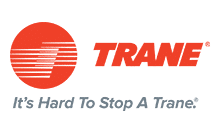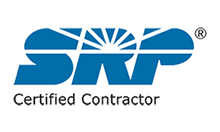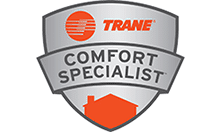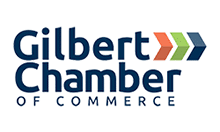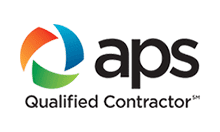New HVAC systems can be costly due to a range of factors that contribute to their overall price. Factors such as the type of system being installed or replaced, the size of the home, the system’s efficiency rating, and the type of fuel or energy source used all play a role in determining the cost. Additionally, the complexity of HVAC systems, which involve powerful equipment like furnaces and ductwork, necessitates professional installation and maintenance, adding to the expense.
The prices of HVAC systems are currently on the rise due to various factors. Manufacturing problems and labor shortages have led to disruptions in the supply chain, impacting the availability and cost of components. The COVID-19 pandemic has also affected the industry, with increased demand for indoor air quality systems. Rising raw material costs, transportation expenses, and fuel prices further contribute to the overall price increase. Furthermore, regulatory changes affecting HVAC systems will result in higher costs for new systems as well as legacy equipment and parts.
Considering the combination of factors such as system type, home size, efficiency rating, installation and maintenance costs, supply chain disruptions, and increased demand, it’s understandable why new HVAC systems come with a high price tag. Homeowners should be prepared for higher prices and potential delays in obtaining replacement parts.
Key Takeaways:
- The cost of a new HVAC system is influenced by factors such as system type, home size, efficiency rating, and fuel or energy source used.
- Professional installation and maintenance are necessary, adding to the overall cost.
- Rising prices are attributed to manufacturing problems, labor shortages, increased demand due to the COVID-19 pandemic, and higher raw material and fuel costs.
- Regulatory changes also impact HVAC system prices.
- Homeowners should anticipate higher prices and potential delays in obtaining replacement parts.
Type of System and Installation
The type of HVAC system being installed or replaced greatly influences the overall cost, with central air conditioning systems requiring additional expenses for ductwork installation. Central air conditioning systems are a popular choice for many homeowners, as they provide efficient cooling throughout the entire building. However, this type of system typically requires the installation of air ducts to distribute the cooled air, which adds to the overall cost.
Professional installation is crucial when it comes to HVAC systems. The complexity of these systems, which involve powerful equipment like furnaces and intricate ductwork, requires the expertise of trained professionals. Hiring professionals ensures that the system is installed correctly, maximizing its performance and longevity. Professional maintenance is equally important, as routine servicing and inspections help to identify and address any issues before they become major problems, further ensuring the system operates at peak efficiency.
Central Air Conditioning Systems
Table: Cost Comparison of HVAC System Types and Installation
| System Type | Average Cost (including installation) |
|---|---|
| Central Air Conditioning | $4,000 – $10,000 |
| Ductless Mini-Split | $2,500 – $7,500 |
| Heat Pump | $3,500 – $6,500 |
In summary, the type of HVAC system being installed or replaced, particularly central air conditioning systems, can significantly impact the cost due to the need for additional expenses like ductwork installation. It is essential to invest in professional installation and maintenance services to ensure optimal performance and longevity of the system. By understanding these factors, homeowners can make informed decisions when it comes to choosing an HVAC system that meets their needs and budget.
Home Size and Efficiency Rating
The size of your home and the efficiency rating of an HVAC system play a significant role in determining the overall cost, with larger homes typically requiring more complex systems. When it comes to HVAC systems, one size does not fit all. The system needs to be able to effectively cool or heat the entire space, and larger homes present a greater challenge in achieving this. As a result, HVAC systems for larger homes often require larger units and more extensive ductwork, which can increase the cost of the system.
In addition to the size of your home, the efficiency rating of an HVAC system is another important factor to consider. Efficiency rating refers to how well the system converts energy into cooling or heating. Higher efficiency systems are often more expensive upfront, but they can result in long-term savings on energy bills. These systems are designed to minimize energy waste and provide better temperature control, which can lead to reduced energy consumption and lower utility costs over time.
When it comes to energy efficiency, it’s essential to look for systems with high Seasonal Energy Efficiency Ratios (SEER) for cooling and high Annual Fuel Utilization Efficiency (AFUE) ratings for heating. The SEER rating measures the cooling efficiency of an air conditioner or heat pump, while the AFUE rating measures the heating efficiency of a furnace. The higher the SEER or AFUE rating, the more efficient the system is and the more cost-effective it can be in the long run.
| Home Size | Efficiency Rating | Cost Impact |
|---|---|---|
| Small | Lower | Less complex system, lower upfront cost |
| Large | Higher | More complex system, higher upfront cost |
Ultimately, when considering a new HVAC system, it’s important to take into account the size of your home and the efficiency rating of the system. This will help you make an informed decision that meets your needs and budget while ensuring optimal comfort and energy efficiency.
Fuel or Energy Source
The type of fuel or energy source used by your HVAC system can significantly impact its price, as different energy sources come with varying costs and availability. When choosing an energy source for your HVAC system, it’s important to consider both the upfront costs and the long-term expenses.
One common fuel used for heating systems is natural gas. Natural gas is often the most cost-effective option, especially in areas where it is readily available. It burns cleanly and efficiently, making it an environmentally friendly choice as well. However, the availability of natural gas may vary depending on your location, which can affect the overall cost of installation.
Another popular fuel option is oil. Oil-fired systems are more commonly found in older homes and areas where natural gas is not easily accessible. While oil can provide efficient heating, it tends to be more expensive than natural gas. Additionally, oil prices can fluctuate, making it less predictable in terms of long-term costs.
| Energy Source | Pros | Cons |
|---|---|---|
| Natural Gas | Cost-effective, efficient, environmentally friendly | Availability may vary |
| Oil | Efficient | More expensive, fluctuating prices |
Electricity is another option for HVAC systems. Electric systems are typically more expensive to operate compared to natural gas or oil, but they can be a good choice in areas with low-cost electricity or where other fuel sources are limited. Electric HVAC systems also tend to have higher upfront costs due to the need for additional electrical infrastructure.
Geothermal systems utilize the constant temperature of the earth to provide heating and cooling. While geothermal systems have higher upfront costs, they offer long-term energy savings. These systems are highly efficient and environmentally friendly, but installation can be complex and expensive.
When selecting the fuel or energy source for your HVAC system, it’s crucial to consider both the initial investment and the ongoing operational costs. Consulting with HVAC professionals can help you determine the best option for your home based on factors such as location, energy prices, and system efficiency.
In Summary:
- The type of fuel or energy source used by your HVAC system can impact its price.
- Natural gas is often the most cost-effective and environmentally friendly option, but availability may vary.
- Oil-fired systems are common in older homes and areas without natural gas, but they tend to be more expensive and have fluctuating costs.
- Electric HVAC systems can be a suitable choice in areas with low-cost electricity or limited fuel sources, but they have higher operational expenses.
- Geothermal systems offer long-term energy savings but come with higher upfront costs and complex installation requirements.
Rising Costs and Industry Impact
HVAC prices are currently on the rise due to several factors, including manufacturing problems, labor shortages, and the impact of the COVID-19 pandemic. These challenges have resulted in disruptions in the supply chain and increased expenses in the industry.
Manufacturing problems have played a significant role in driving up HVAC prices. Issues such as raw material shortages and production delays have led to increased manufacturing costs. This, in turn, has put upward pressure on the prices of new HVAC systems.
Labor shortages have also contributed to the rising costs. The HVAC industry relies heavily on skilled technicians for installation and maintenance. With a shortage of trained professionals, labor costs have increased, making it more expensive for homeowners to have their HVAC systems serviced or replaced.
The COVID-19 pandemic has further impacted the HVAC industry. The increased focus on indoor air quality and ventilation has led to a surge in demand for HVAC systems capable of filtering and purifying air. This heightened demand has put strain on the supply chain, leading to delays in obtaining replacement parts and ultimately driving up prices.
Additionally, raw material costs, transportation expenses, and fuel prices have all contributed to the overall rise in HVAC prices. Factors such as increased demand, limited supply, and volatile market conditions have influenced the pricing of HVAC systems and related products.
| Factors | Impact |
|---|---|
| Manufacturing Problems | Increased manufacturing costs |
| Labor Shortages | Higher costs for installation and maintenance |
| COVID-19 Impact | Delays in obtaining replacement parts |
| Raw Material Costs | Rising expenses for production |
| Regulatory Changes | Pressure on new systems and legacy equipment |
Installation and Maintenance Costs
The installation and maintenance of an HVAC system involve professional expertise, which contributes to the overall cost of the system. Professional installation is crucial to ensure the system is correctly set up and operates efficiently. Trained technicians have the knowledge and experience to handle the complexities of HVAC systems, including connecting ductwork, wiring, and troubleshooting any issues that may arise during the installation process. This level of expertise guarantees that the system will perform optimally, reducing the risk of future breakdowns and costly repairs.
In addition to installation expenses, ongoing maintenance is essential to keep the HVAC system in good working order. Regular maintenance visits by professionals help identify and address potential problems before they escalate into major issues. This proactive approach can extend the lifespan of the system and prevent costly breakdowns. Maintenance tasks may include cleaning or replacing air filters, inspecting and lubricating moving parts, checking refrigerant levels, and calibrating thermostats. By investing in professional maintenance, homeowners can maximize the efficiency and longevity of their HVAC systems, ultimately saving on energy costs and avoiding expensive repairs down the line.
It’s important to note that while professional installation and maintenance may increase the upfront cost of a new HVAC system, it is a worthwhile investment. Choosing cheaper alternatives, such as DIY installation or skipping regular maintenance, can lead to subpar performance, decreased energy efficiency, and potential safety hazards. It’s always best to prioritize the expertise of professionals to ensure the system operates safely and efficiently, providing optimal comfort for your home.
| Professional HVAC Installation | Professional HVAC Maintenance |
|---|---|
| Correct and efficient installation by trained technicians | Regular maintenance visits to address potential issues |
| Connection of ductwork, wiring, and troubleshooting | Cleaning or replacement of air filters |
| Reduces the risk of breakdowns and costly repairs | Inspecting and lubricating moving parts |
| Maximizes efficiency, lifespan, and energy savings of HVAC system | |
Supply Chain Disruptions and Increased Demand
Supply chain disruptions and increased demand are additional factors that contribute to the high cost of new HVAC systems, often resulting in delays for obtaining replacement parts. The HVAC industry relies on a complex network of suppliers and manufacturers to produce and distribute equipment and components. Disruptions in this supply chain can result from a variety of factors, such as natural disasters, trade disputes, and global pandemics.
During the COVID-19 pandemic, the HVAC industry experienced significant disruptions as factories shut down, transportation became more challenging, and international trade was affected. These disruptions led to delays in production and increased costs for raw materials, which ultimately impact the pricing and availability of new HVAC systems.
In addition to supply chain disruptions, there has been a surge in demand for HVAC systems due to various factors. As more people spend time indoors, the need for reliable heating, ventilation, and air conditioning has become increasingly important. This increased demand puts pressure on manufacturers and distributors to meet the growing market needs, resulting in higher prices and potential delays for consumers.
Overall, the combination of supply chain disruptions and increased demand has created a challenging environment for the HVAC industry. Homeowners should be prepared for potential delays in obtaining replacement parts and higher costs for new HVAC systems. It is essential to work with qualified professionals who can navigate these obstacles and ensure the best outcomes for your HVAC needs.
| Factors | Impact on HVAC Prices |
|---|---|
| Type of System | Different systems have varying costs, with central air conditioning systems being more expensive due to the requirement for ductwork installation. |
| Home Size | Larger homes often require more extensive HVAC systems, leading to higher costs. |
| Efficiency Rating | Highly efficient systems may have a higher upfront cost but can result in long-term energy savings. |
| Fuel or Energy Source | The type of fuel or energy source used can impact the overall cost of the HVAC system. |
| Installation and Maintenance | Professional installation and ongoing maintenance contribute to the overall expenses of HVAC systems. |
Tips for Reducing HVAC Expenses
There are ways to mitigate the expenses associated with HVAC systems, and this section will provide practical tips to help you reduce your HVAC costs. By following these budget-friendly strategies, you can optimize the efficiency of your HVAC system and save money in the long run.
1. Schedule Regular Maintenance
Regular maintenance is crucial for keeping your HVAC system running efficiently and preventing costly repairs. Hire a professional HVAC technician to inspect and tune-up your system at least once a year. This will ensure that all components are clean, lubricated, and functioning properly, reducing the risk of breakdowns and increasing the lifespan of your equipment.
2. Upgrade to a Programmable Thermostat
Investing in a programmable thermostat can help you save on energy costs. Set your thermostat to adjust the temperature when you’re away from home or sleeping, allowing for optimal comfort when you’re present while minimizing energy consumption during idle periods. With programmable thermostats, you can create schedules that align with your daily routine, maximizing energy efficiency and reducing heating and cooling expenses.
3. Seal and Insulate Your Home
One of the main contributors to HVAC inefficiency is air leakage. Properly sealing and insulating your home will prevent drafts and keep conditioned air from escaping, reducing the workload on your HVAC system. Check for gaps around doors, windows, and electrical outlets, and seal them with caulk or weather-stripping. Additionally, insulate your attic and walls to reduce heat transfer and improve overall energy efficiency.
| Tip | Description |
|---|---|
| 4. Maintain Air Filters | Regularly clean or replace your HVAC system’s air filters to ensure optimal airflow. Clogged filters restrict airflow and force your system to work harder, leading to increased energy consumption and higher utility bills. |
| 5. Use Ceiling Fans | Utilize ceiling fans to enhance the effectiveness of your HVAC system. In warmer months, set your fans to rotate counterclockwise to create a cooling breeze. In colder months, reverse the direction to circulate warm air that tends to rise. |
| 6. Consider Zoning Systems | Zoning systems allow you to heat or cool specific areas of your home based on occupancy and comfort preferences. By directing conditioned air where it’s needed most, you can minimize energy waste and reduce heating and cooling expenses. |
Implementing these tips will not only help you cut down on HVAC expenses but also contribute to a more sustainable and energy-efficient home. By maintaining your system, utilizing advanced thermostat settings, improving insulation, and exploring zoning options, you can achieve significant savings while enjoying consistent comfort throughout your home.
Conclusion
Understanding the factors that drive up the cost of new HVAC systems is essential for homeowners to make informed decisions and anticipate potential expenses. When it comes to installing or replacing an HVAC system, several factors need to be considered, such as the type of system and its installation requirements. Central air conditioning systems, for instance, are typically more expensive due to the need for ductwork to distribute cooled air throughout the building.
In addition to the type of system, the size of the home and the efficiency rating of the HVAC system can also impact its price. Larger homes may require more extensive systems, resulting in higher costs. Moreover, energy-efficient systems, while initially more expensive, can provide long-term savings on energy bills.
The choice of fuel or energy source used by an HVAC system can also affect its price. Different energy sources come with varying costs and availability, which can influence the overall expense of the system. Homeowners should carefully consider the benefits and costs associated with each fuel or energy option.
Furthermore, the current HVAC market is experiencing rising prices due to various factors. Manufacturing problems and labor shortages have disrupted the supply chain, leading to potential delays in obtaining replacement parts. The COVID-19 pandemic has also impacted the industry, as increased demand for indoor air quality systems has driven up prices. Additionally, raw material costs, transportation costs, fuel prices, and regulatory changes contribute to the overall increase in HVAC prices.
In conclusion, the high cost of new HVAC systems can be attributed to a combination of factors, including the type of system, the size of the home, the efficiency rating, installation and maintenance costs, as well as supply chain disruptions and increased demand. Homeowners should expect higher prices and potential delays in obtaining replacement parts. By understanding these factors, homeowners can better navigate the HVAC market and make informed decisions about their HVAC system investments.
FAQ
Why are new HVAC systems so expensive?
New HVAC systems can be expensive due to various factors. One factor is the type of system being installed or replaced, with central air conditioning systems being more expensive due to the need for ductwork. Other factors include the size of the home, the system’s efficiency rating, the type of fuel or energy source used, and the complexity of installation and maintenance.
How does the type of system and installation impact the cost?
The type of HVAC system being installed or replaced can impact the cost. Central air conditioning systems, for example, require ductwork, making them more expensive. Additionally, professional installation and maintenance are crucial for optimal system performance but come with additional costs.
How does home size and efficiency rating affect HVAC prices?
The size of a home and the efficiency rating of an HVAC system can influence its price. Larger homes typically require larger systems, resulting in higher costs. Additionally, more energy-efficient systems with higher efficiency ratings may have a higher upfront cost but can lead to long-term savings on energy bills.
What role does the fuel or energy source play in HVAC pricing?
The fuel or energy source used by an HVAC system can impact its price. Different energy sources have varying costs and availability, which can contribute to the overall expense of the system. For example, systems using renewable energy sources may have higher upfront costs but can lead to savings in the long run.
What factors are causing rising HVAC prices?
HVAC prices are currently rising due to a range of factors. This includes manufacturing problems, labor shortages, increased demand for indoor air quality systems due to the COVID-19 pandemic, higher raw material costs, transportation costs, fuel prices, and regulatory changes affecting HVAC systems.
How do installation and maintenance costs contribute to the overall expense?
Professional installation and maintenance are necessary for HVAC systems, which involve complex equipment like furnaces and ductwork. Hiring trained professionals for installation and regular maintenance adds to the overall cost but ensures efficient and safe operation of the system.
How do supply chain disruptions and increased demand affect HVAC prices?
Supply chain disruptions and increased demand can impact HVAC system prices. These disruptions can result in delays in obtaining replacement parts, leading to potential price increases. Market conditions and increased demand for HVAC systems also contribute to the rising prices.
Are there any tips for reducing HVAC expenses?
Yes, there are several tips for reducing HVAC expenses. Homeowners can consider budget-friendly HVAC choices and energy-saving practices, such as regular maintenance, optimizing insulation, using programmable thermostats, and sealing air leaks to improve efficiency and reduce energy costs.





